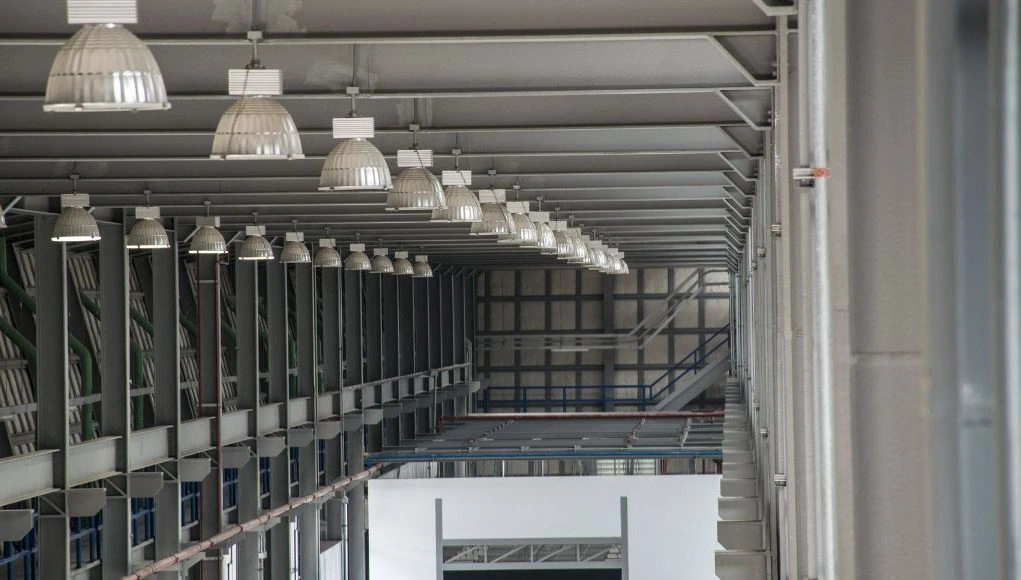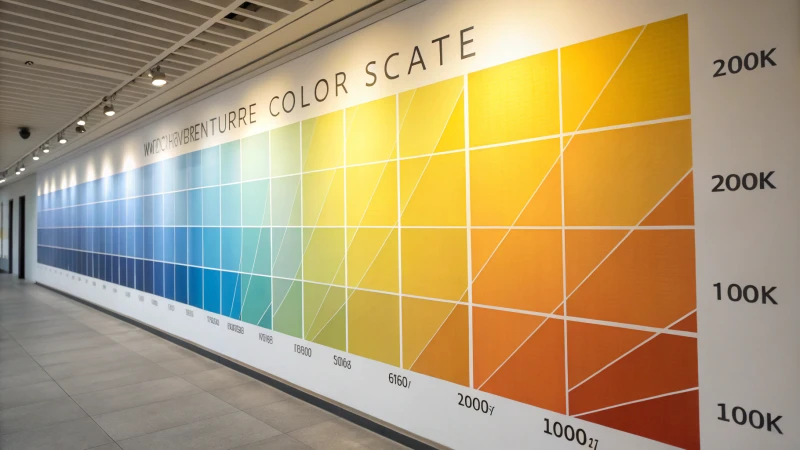Which Lighting Color Temperature Is Best for Your Home?

Choosing the right lighting for your home isn’t just about illumination; it’s about creating the right vibe. But where do I start with color temperature?
When deciding on the best color temperature for your home, consider the purpose of each space. 3000K creates a warm, cozy atmosphere ideal for living areas, while 4000K offers a neutral tone suited for kitchens and workspaces. In contrast, 6000K mimics daylight and enhances focus, perfect for outdoor areas.
I remember when I first moved into my home, the lighting felt so off. It wasn’t until I learned about color temperatures that I truly began to understand how light can shape a space. Each room has its own personality—3000K gives that cozy feel in the living room, perfect for curling up with a book. Meanwhile, 4000K shines in the kitchen, providing clarity and focus while I whip up meals. Then there’s 6000K, which mimics daylight and is a game-changer for my outdoor spaces, energizing my mornings! Let’s explore how these different temperatures can transform your home into a sanctuary that reflects your unique style.
3000K lighting is best for creating a cozy living room atmosphere.True
3000K provides warm light, ideal for relaxation and comfort in living spaces.
6000K lighting is suitable for enhancing focus in outdoor areas.True
6000K mimics daylight, making it effective for tasks requiring concentration outdoors.
What is Color Temperature and Why Does It Matter?
Have you ever walked into a room and instantly felt a shift in your mood? That’s the magic of color temperature at work! But what does it really mean, and why should we care? Let’s dive in together.
Color temperature refers to the appearance of light measured in Kelvin (K). It influences mood and aesthetics in various settings like photography and interior design. Understanding this helps create the perfect atmosphere for any environment.
Main Content:
Color temperature is more than just a technical term; it’s an essential aspect of how we experience our surroundings. When I first learned about it, I was fascinated by how something as simple as light could influence our emotions and daily lives. Measured in Kelvin (K), color temperature tells us whether a light source gives off warm, inviting tones or cool, invigorating shades. This knowledge is especially crucial for those of us involved in photography and design.
I remember when I was setting up my home office, trying to create the perfect environment for productivity. I opted for soft white lighting around 3,000 K. The result? A cozy yet focused space that kept me energized without feeling overwhelmed. Contrast that with my friend who chose daylight bulbs at 6,500 K for his workspace—it felt stark and clinical, making it hard to concentrate for long periods.
Understanding Color Temperature
Color temperature is a metric that describes the hue of a light source. Measured in Kelvin (K), it categorizes light from warm (reddish) to cool (bluish) tones. Understanding this concept is essential for various applications, especially in lighting design and photography.
For instance, a candle emits light at around 1,000 K, giving it a warm appearance. In contrast, a typical daylight source can range between 5,000 K to 6,500 K, presenting a cooler tone.
The Kelvin Scale
The Kelvin scale serves as the basis for understanding color temperature. Here’s a quick reference table:
| Temperature (K) | Color Appearance |
|---|---|
| 1,000 – 2,700 | Warm White |
| 2,700 – 3,200 | Soft White |
| 3,200 – 4,000 | Neutral White |
| 4,000 – 5,500 | Cool White |
| 5,500 – 6,500 | Daylight |
| Above 6,500 | Bluish White |
Choosing the right color temperature can dramatically affect the ambiance of a space or the quality of a photograph. Explore more on how color temperatures impact design1.
Why Color Temperature Matters in Lighting
In lighting design, selecting the appropriate color temperature is crucial. It can influence mood and productivity. Warmer tones are often used in residential settings to create a cozy atmosphere while cooler tones are favored in offices to enhance focus and alertness.
Additionally, certain industries require specific color temperatures to achieve desired results. For example, in retail spaces where we chose cooler lighting to showcase products vibrantly—the result? Customers were drawn in and spent more time browsing—just by adjusting the lighting!
Color Temperature in Photography
For photographers like myself understanding color temperature is vital for capturing images that reflect reality accurately. Different light sources can alter colors in photographs; using the correct white balance setting compensates for these variations.
To effectively manage color temperature in photography consider this:
- Tungsten Light: ~3200 K (Warm)
- Daylight: ~5500 K (Neutral)
- Shade: ~7000 K (Cool)
Adjusting your camera settings according to these temperatures can lead to better results.
Understanding color temperature isn’t just an academic exercise but has practical implications across various fields—from enhancing workplace productivity through optimal lighting choices to ensuring photographic accuracy; mastering this concept can transform your projects—and perhaps your life! So next time you flip a switch or set up a shot think about the color temperature and how it can shape your experience.

